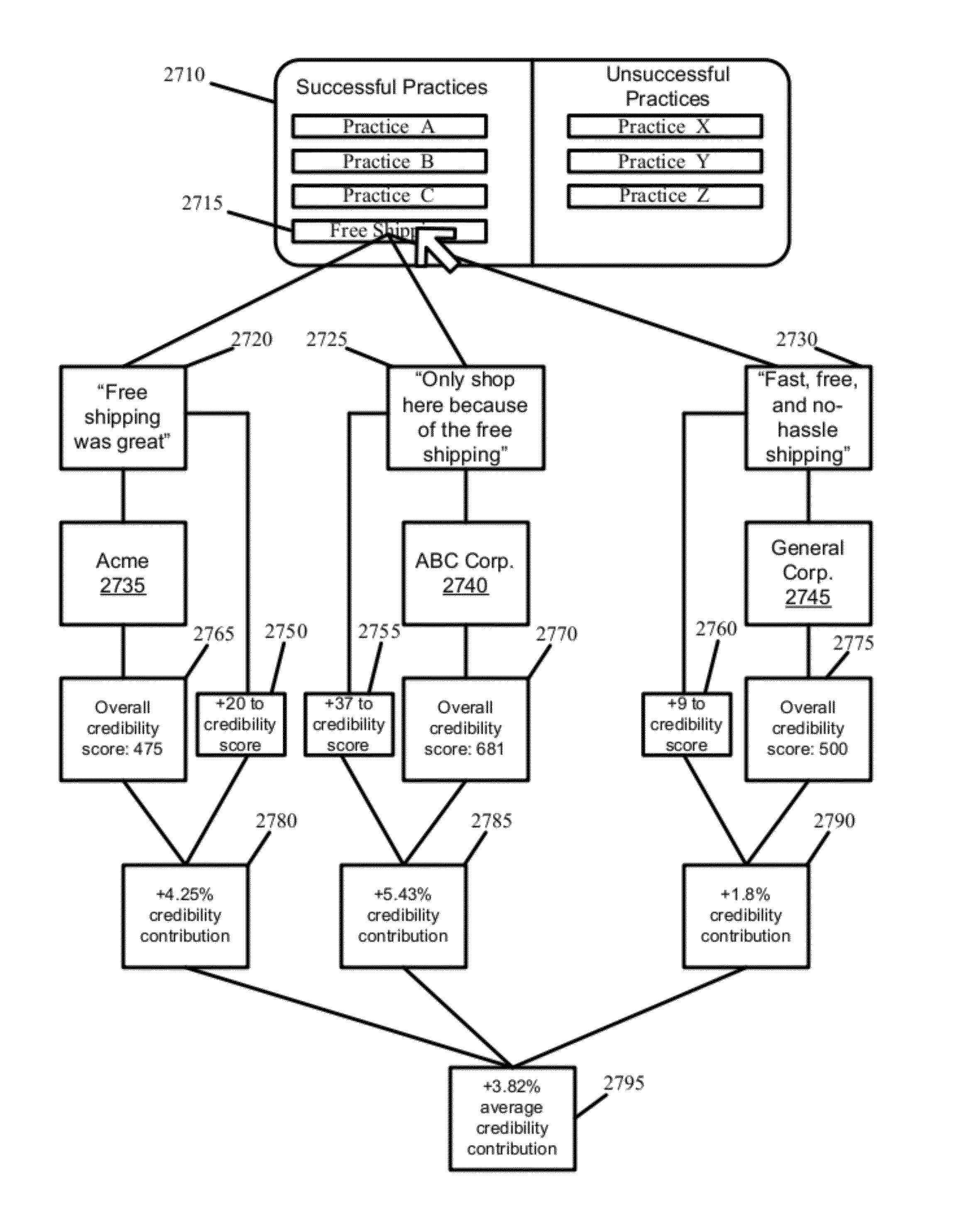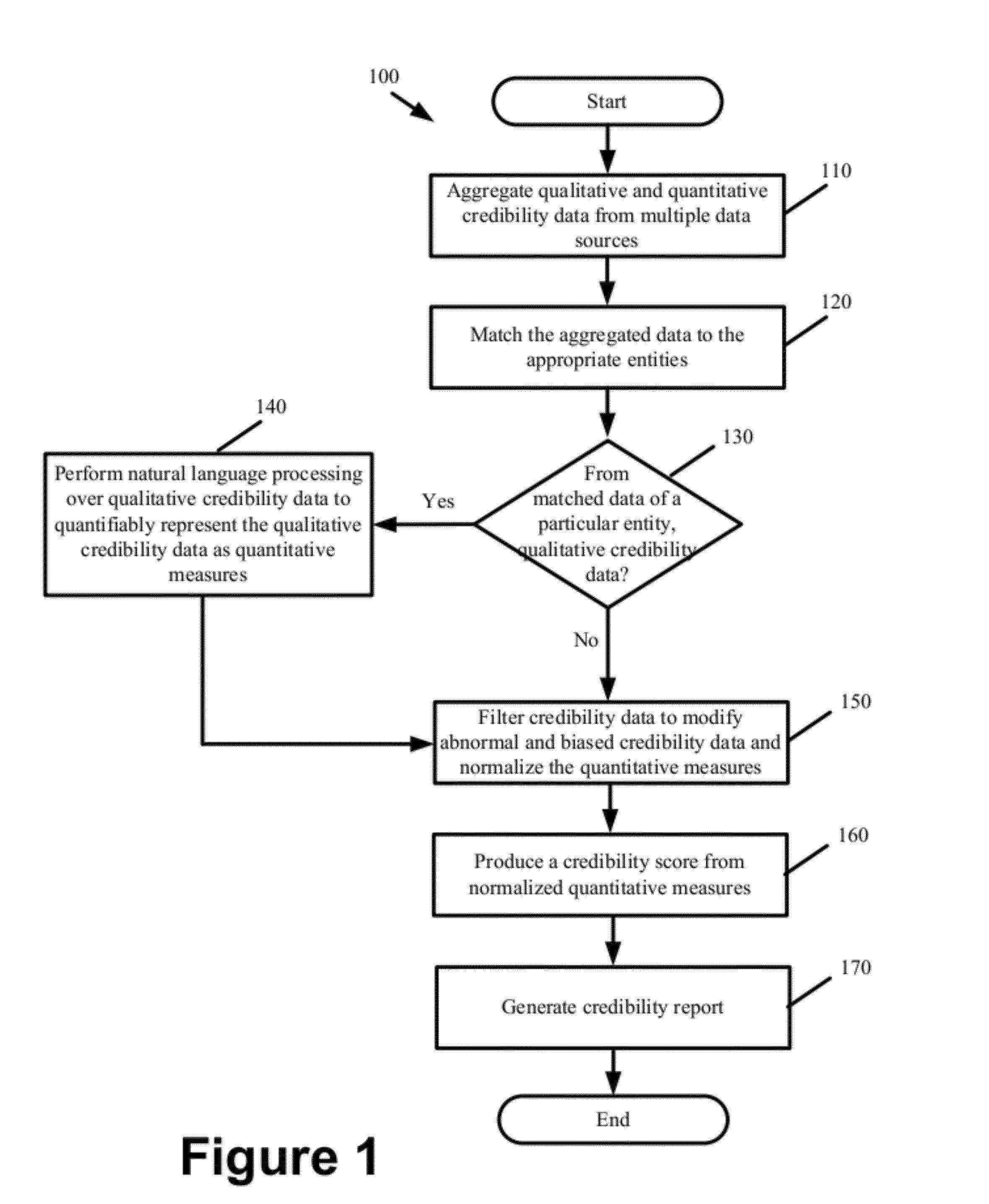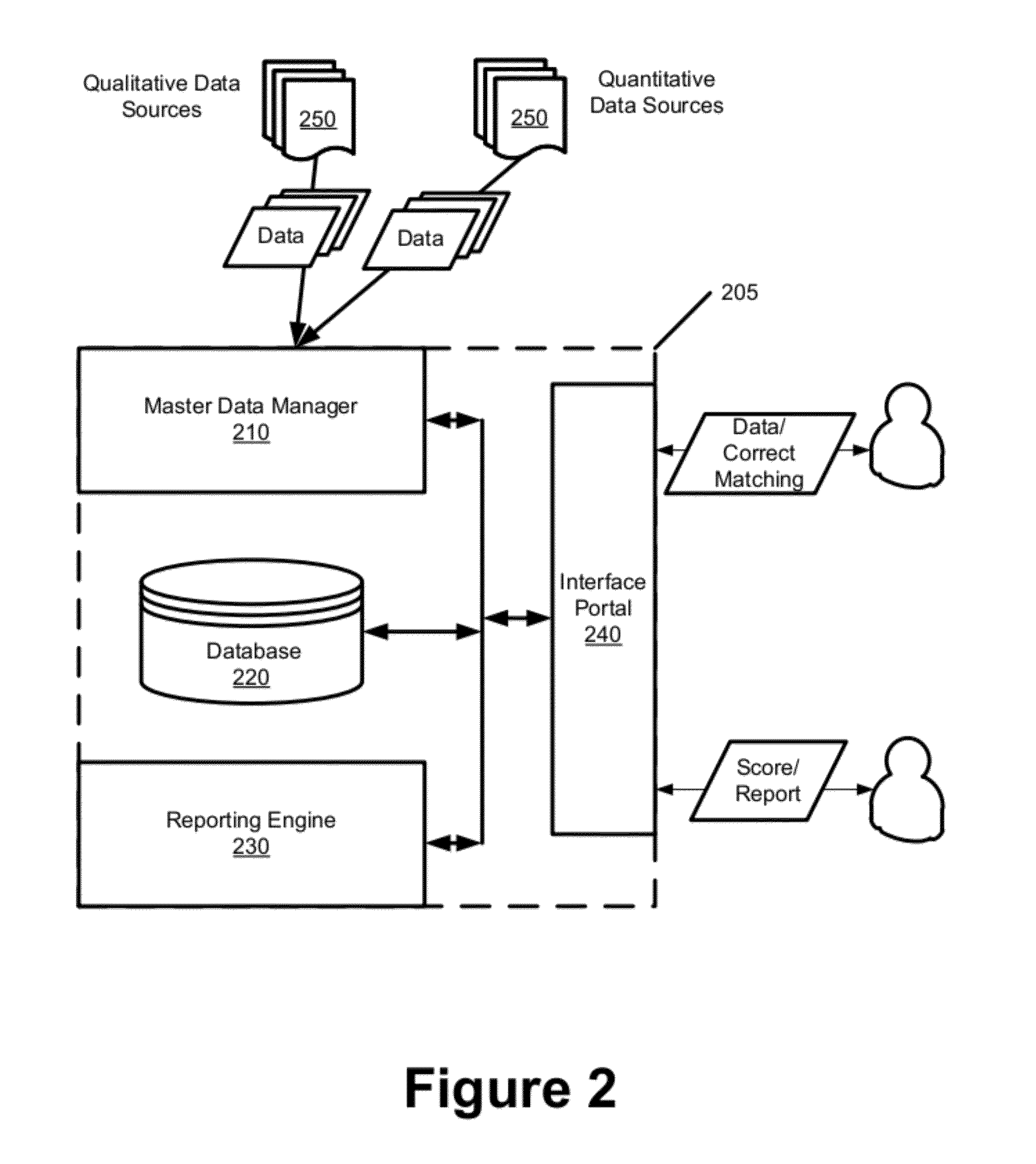Indices for credibility trending, monitoring, and lead generation
a technology of credibility and trending indicators, applied in the field of indicators for credibility trending, monitoring, and lead generation, can solve the problems of unreliable independent credibility data, small business doom, and long time-consuming and laborious,
- Summary
- Abstract
- Description
- Claims
- Application Information
AI Technical Summary
Benefits of technology
Problems solved by technology
Method used
Image
Examples
Embodiment Construction
[0054]In the following detailed description, numerous details, examples, and embodiments of a credibility scoring and reporting system including the indexer and the associated methods are set forth and described. As one skilled in the art would understand in light of the present description, the system and methods are not limited to the embodiments set forth, and the system and methods may be practiced without some of the specific details and examples discussed. Also, reference is made to accompanying figures, which illustrate specific embodiments in which the invention can be practiced. It is to be understood that other embodiments can be used and structural changes can be made without departing from the scope of the embodiments herein described.
[0055]I. Overview
[0056]For the small business, business credibility is an invaluable asset that can be used to identify which business practices have been successful, practices that have inhibited the success of the business, desired improv...
PUM
 Login to View More
Login to View More Abstract
Description
Claims
Application Information
 Login to View More
Login to View More - R&D
- Intellectual Property
- Life Sciences
- Materials
- Tech Scout
- Unparalleled Data Quality
- Higher Quality Content
- 60% Fewer Hallucinations
Browse by: Latest US Patents, China's latest patents, Technical Efficacy Thesaurus, Application Domain, Technology Topic, Popular Technical Reports.
© 2025 PatSnap. All rights reserved.Legal|Privacy policy|Modern Slavery Act Transparency Statement|Sitemap|About US| Contact US: help@patsnap.com



